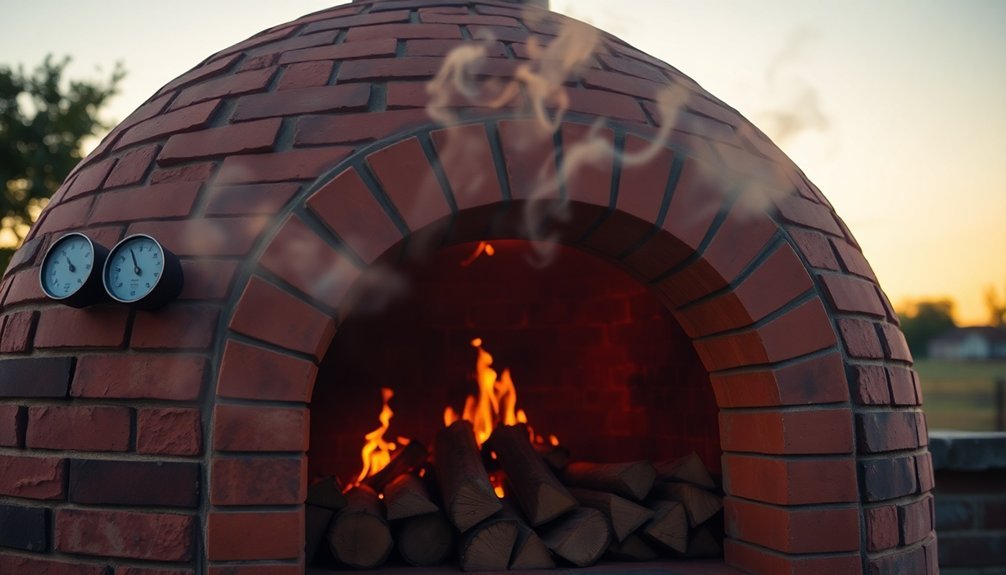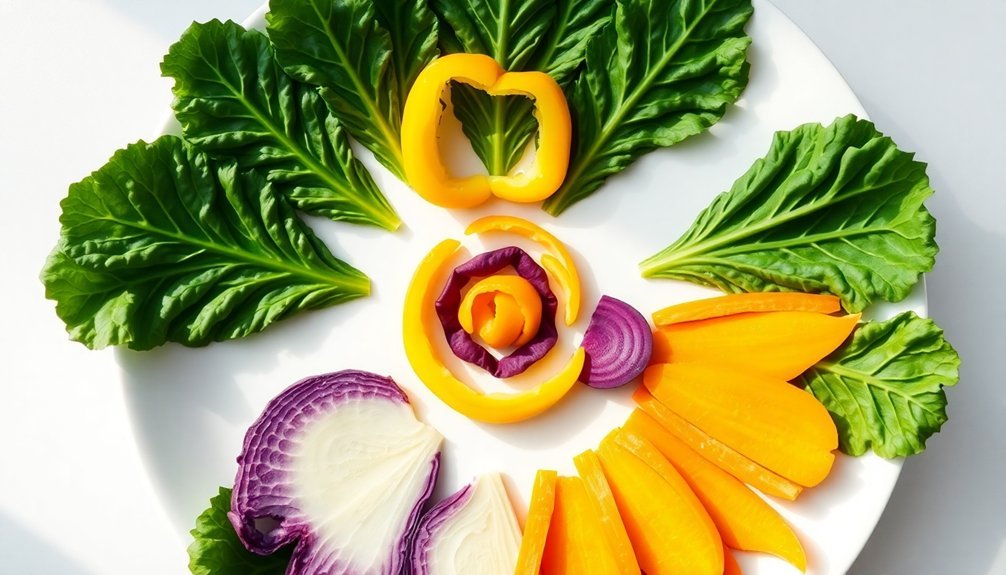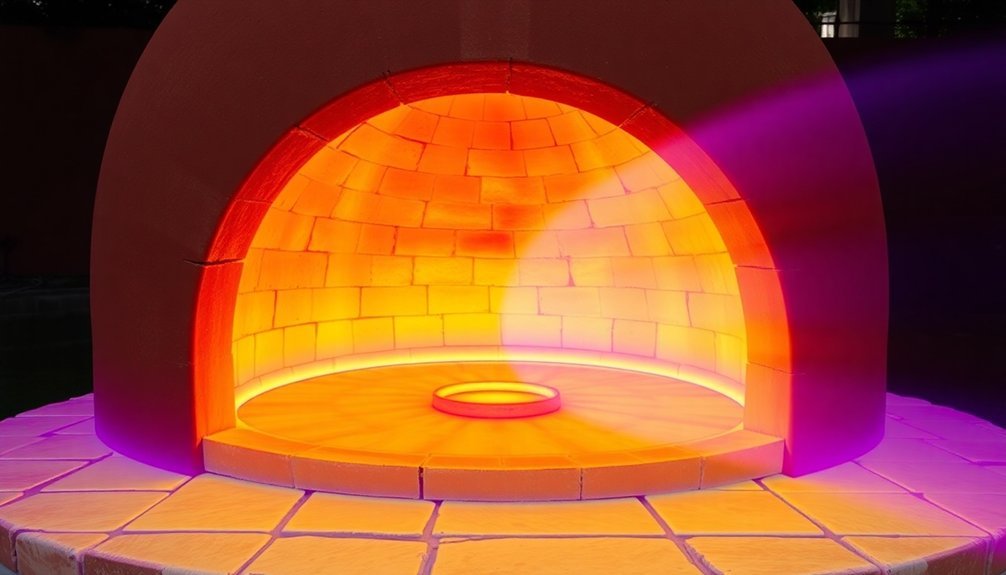You'll get the best results from your outdoor oven during three ideal preheating times. Early summer mornings offer cooler temperatures that reduce heat buildup around your cooking area while maximizing efficiency. Mid-afternoon sessions, though challenging, provide perfect conditions for reaching those essential 650-700°F temperatures needed for perfect cooking. Cloudless spring days deliver stable weather patterns that maintain consistent cooking temperatures, especially when you start preheating in the early morning. By understanding these timing strategies and using the right monitoring techniques, you'll gain access to your outdoor oven's full potential.
Early Morning Summer Preheat

When temperatures soar during summer months, preheating your outdoor oven in the early morning offers significant advantages for both comfort and efficiency.
You'll benefit from cooler ambient temperatures that help minimize heat buildup around your cooking area while putting less strain on your home's air conditioning system.
Consider using glass or ceramic cookware to improve heat retention and reduce overall cooking times during your morning baking sessions.
Mid-Afternoon Peak Heat
Although preheating your outdoor oven during mid-afternoon peak heat presents unique challenges, you'll gain several advantages from the day's natural thermal conditions. You'll need 1½ to 2 hours to reach ideal temperatures of 650-700°F, which guarantees proper soot burn-off and even heating throughout the dome and floor. Modern convection/thermal ovens offer faster alternatives for indoor cooking.
| Temperature Range | Best For | Heat Time | Maintenance |
|---|---|---|---|
| 750°F+ | Quick-cooking seafood | 2 hours | Monitor vents |
| 430-480°F | Bread and roasts | 1.5 hours | Move fire around |
| 400-500°F | Pizza and flatbreads | 1.5 hours | Add logs as needed |
| 350-430°F | Pastries and slow braises | 1 hour | Use retained heat |
For best results, use well-seasoned hardwoods like ash, birch, or oak, and monitor temperatures with a laser thermometer while looking for the dome to whiten.
Cloudless Spring Days

Clear spring days offer prime conditions for preheating your outdoor oven, as stable weather patterns help maintain consistent temperatures throughout your cooking session.
You'll want to start preheating early in the morning to counter the cool temperatures typical of cloudless spring days.
Consider using temporary covers or windbreaks to protect your oven from shifting wind patterns that can affect temperature stability.
You'll find that diurnal temperature variations mean you'll need longer preheating times in the morning, but the clear skies will help maintain steady temperatures once achieved.
Similar to how Mediterranean climate patterns influence wine regions, spring offers predictable daily temperature cycles that are ideal for outdoor cooking.
Monitor your oven's temperature regularly and adjust fuel as needed.
Since spring weather can be unpredictable, keep an eye on approaching cold fronts that might require adjustments to your preheating schedule or additional insulation measures.
Frequently Asked Questions
How Do Rain and Snow Affect Outdoor Oven Preheating Times?
When your outdoor oven's exposed to rain or snow, you'll need longer preheating times since moisture seeps into firebricks. You'll have to dry out the absorbed water before reaching ideal cooking temperatures.
Can Strong Winds Impact the Temperature Maintenance of My Outdoor Oven?
Yes, strong winds can greatly affect your outdoor oven's temperature. They'll pull heat away and force air through vents, making it harder to maintain steady temperatures. You'll need windscreens or sheltered spots for better control.
Should I Adjust Preheating Duration During High Humidity Days?
Yes, you'll need to extend your preheating time on humid days. Since humidity slows heat transfer and affects temperature distribution, add an extra 30-60 minutes to your usual preheating routine for ideal results.
Does Altitude Affect the Recommended Preheating Time for Outdoor Ovens?
Yes, altitude will affect your preheating time. You'll need longer preheating periods at higher elevations due to lower air pressure and less efficient fuel combustion. Plan to add 15-20% more time above 3,500 feet.
What's the Minimum Outdoor Temperature Needed for Effective Oven Preheating?
You can preheat your outdoor oven in any temperature, but you'll need to be extra careful below 32°F. Just heat it more slowly to prevent thermal shock and guarantee you're using dry hardwood fuel.
In Summary
You'll get the most effective preheating results by timing your outdoor oven sessions strategically. Whether you're firing up at dawn during summer months, taking advantage of mid-afternoon heat, or capitalizing on clear spring days, you're saving both time and fuel. Remember to check your local weather forecast to make the most of these ideal preheating windows and guarantee your outdoor cooking adventures are a success.





Leave a Reply